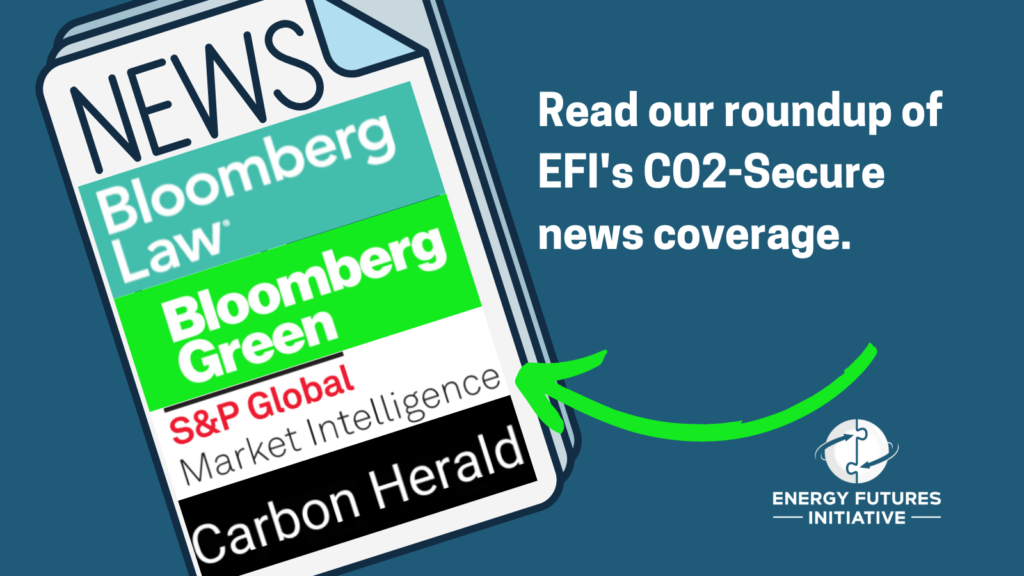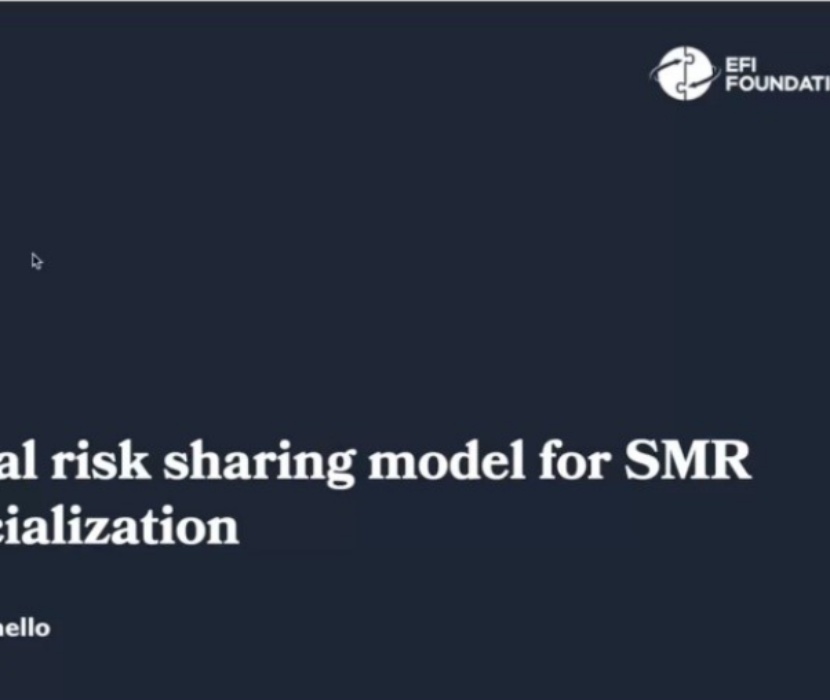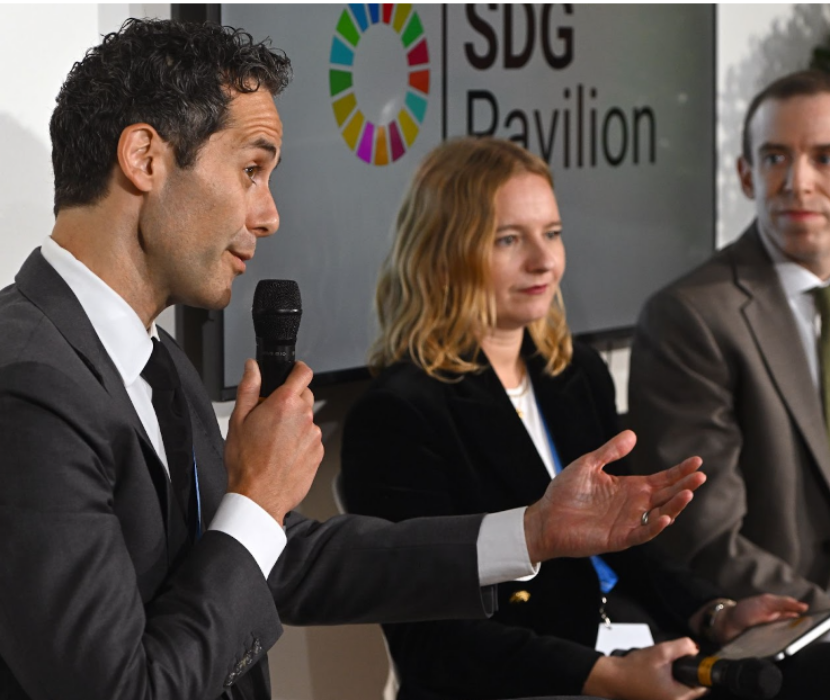
In December 2022, the Energy Futures Initiative (EFI) generated buzz from news outlets including Bloomberg, S&P Global, and the Carbon Herald with the announcement that the United States could achieve billion-ton scale carbon removal and meet net-zero emissions goals through a federal carbon dioxide removal program. Reporters focused on the fact that EFI’s CEO Ernest Moniz—who was U.S. energy secretary for President Obama’s second term—proposed this program, part of an initiative that EFI calls “CO2-Secure.” Here’s the news coverage that hit below those headlines:
Bloomberg Law
Bloomberg Law reporter Dean Scott zeroed in on Moniz’s remarks that to pull billions of tons of carbon emissions from the air, the United States will need a massive expansion of carbon removal technologies and have this expansion be overseen by a new federal entity. The federal investment would be $33.2 billion for the first 10-year period, dwarfing all previous carbon capture investment by the federal government.
“The big scale we’re talking about is not exactly for the faint of heart,” Moniz said, “but neither is the challenge.” Moniz added that to address this challenge, we would need to start scaling up carbon removal technologies in the next decade.
Scott’s article details federal support for carbon management up until now. He notes that while that outlook of CO2-Secure and the related legislation is unclear with the divided Congress that began this year, that “both parties have worked together in recent years to advance policies on carbon capture, including direct air capture.”
Read the article: Billions for Carbon Removal Crucial to Net Zero Goal, Moniz Says
Bloomberg Green
Bloomberg Green reporter David R. Baker pointed to Moniz saying that an industry that can remove vast amounts of carbon from the atmosphere is essential to fighting climate change. The federal entity in the CO2-Secure initiative would be called a National Carbon Removal Authority and “would treat extracting carbon from the air as a public benefit, paid for with public money,” Baker reported.
While companies are developing methods to remove carbon from the air, these efforts are needed on a much larger scale to keep global warming below 1.5 degrees Celsius. He quoted Moniz, who said, “We have to fight for every…tenth of a degree we can get.”
Baker acknowledged that while CDR would be a big part of avoiding the worst effects of climate change, we still need to reduce carbon dioxide emissions.
Read the article: Former U.S. Energy Secretary Proposes Agency to Pay for Carbon Removal (you can also listen to the article.)
S&P Global
Reporter Siri Hedreen’s S&P Global article explains that EFI’s proposed federal authority could pay for various types of carbon removal projects. Projects would be included that remove carbon from the air through nature-based methods—such as habitat restoration—that utilize the carbon-absorbing properties of plants or oceans. The federal authority would also pay for technology-based carbon removal projects, such as direct air capture. (See EFI’s Frontiers of CDR reports for more information about many carbon dioxide removal pathways.)
Hedreen reported that EFI’s CO2-Secure proposal would be a follow-on to carbon removal legislation introduced this past year, including the Federal Carbon Dioxide Removal Leadership Act (H.R.7434, S.4280), sponsored by U.S. Representatives Paul Tonko (D-NY-20) and Scott Peters (D-CA-52). Both Tonko and Peters gave opening remarks at EFI’s event.
The new federal entity that EFI proposes would be outside the Energy Department and would be set up with a government corporation business model. CO2-Secure would begin in 2035, following an precursor pilot carbon purchasing program such as was proposed in the Federal Carbon Removal Leadership Act or in the bipartisan Carbon Removal and Emission Storage Technologies (CREST) Act (S.4420) that is sponsored by Senator Susan Collins (R-Maine).
Senators Chris Coons (D-Delaware) and Sheldon Whitehouse (D-Rhode Island) co-sponsored a bill in the Senate corresponding to the Tonko-Peters House bill. And Collins’ CREST Act was joined by support from Senator Bill Cassidy (R-Louisiana), Senator Angus King (I-Maine), and Senator Maria Cantwell (D-Washington).
Read the article: Think tank led by former US energy chief calls for federal CO2 purchasing agency
Carbon Herald
Reporter Dimana Doneva from the Carbon Herald reported that Moniz and U.S. Representatives Tonko and Peters urged policymakers to view carbon removal as a “public good” since it is crucial for meeting climate targets, but the private sector doesn’t have much financial incentive to develop them.
Of carbon removal’s importance, Doneva quoted from Moniz’s statement at the CO2-Secure launch event: “We certainly feel that gigaton scale CO2 removal—CDR—is absolutely necessary for any serious attempt to our reach net-zero and ultimately, net-negative goals somewhere down the road a few decades,” Moniz said.
Doneva points out that the new carbon purchasing authority would require authorization from Congress and quoted a line from our CO2-Secure report: “Attracting bipartisan political support is essential, both for the enactment of the needed legislation as well as for sustaining support for implementation over time.”
Read the article: U.S. think tank leader proposes a federal authority to pay for carbon removal
More News
Check out more of EFI in the news or read our summary of the CO2-Secure report launch event.
– Georgia Lyon, Communication Associate
with contributions from Alicia Moulton (Deputy Director of Communications)
(Share this post with others.)




